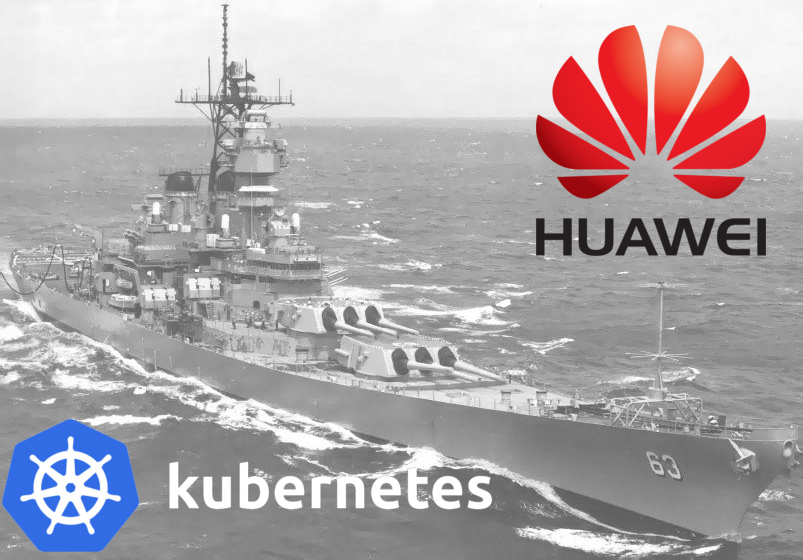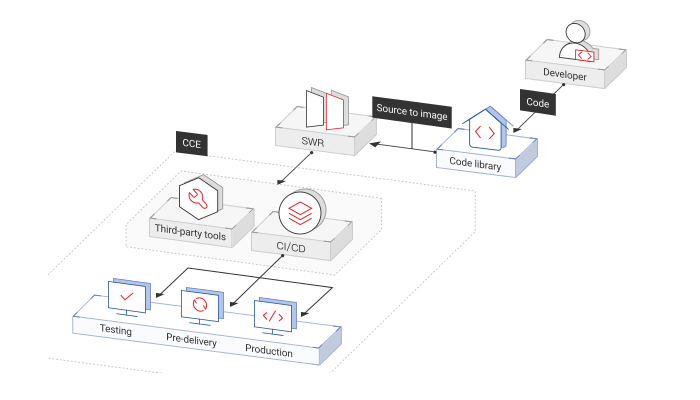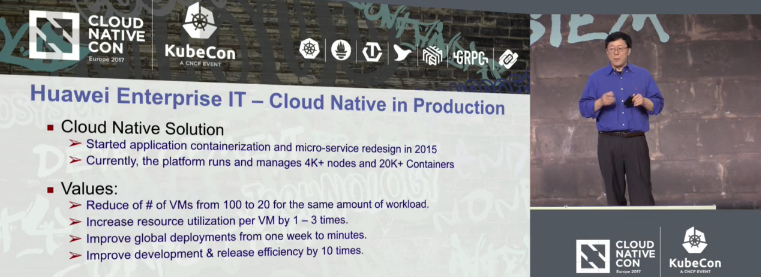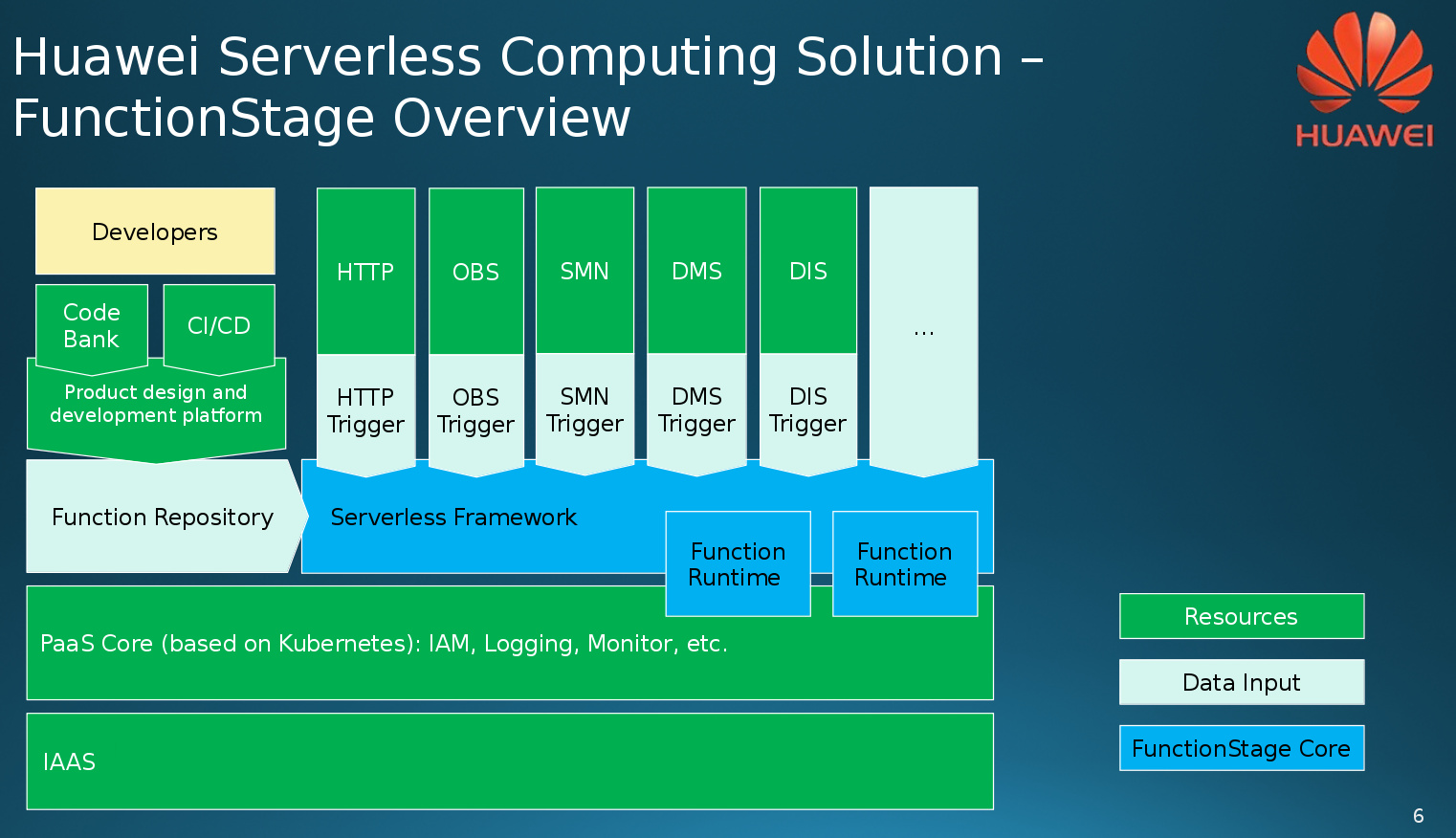Kubernetes success stories in production. Part 8: Huawei
The development of the complex IT infrastructure of the Chinese company Huawei, which has more than 180,000 employees, led to new challenges and requirements, the answer to which was the creation of PaaS based on Kubernetes and Docker. The internal use of the new platform has not just proven itself, but also has shown a real interest from the outside - on the part of Huawei customers. So, using Open Source-products and its extensive enterprise-experience, the company managed to close its internal needs, offer competitive services in the market and help the community with the development of important projects.

In November 2015, Huawei representatives participated in the KubeCon 2015 conference. By that time, the first production release of their cloud-based PaaS based on Kubernetes was released (it was released in July of the same year), and their visit to Huawei was explained by the desire to communicate and “exchange their ideas With the Kubernetes community. According to the chief cloud platform architect at Huawei (Ying Xiong), the choice of K8s was due to :
')
What was the Huawei PaaS? Her early announcement took place shortly before this - in September 2015 at the Huawei Cloud Congress 2015 (HCC 2015), which was held at the Shanghai Expo Center. Then the company demonstrated its latest cloud development: FusionSphere 6.0, FusionInsight, FusionStage . The latter is PaaS, mentioned at KubeCon. The authors described the UN as a “lightweight and easy-to-use cloud platform PaaS designed for developers of industry applications ” and belonging to the category of on-premises.
FusionStage in its first release appeared to be a platform, the technical basis for which was formed with:
The features of FusionStage PaaS called the possibility of its deployment in different - that is, public (including AWS, Azure, Google Cloud and own Huawei Enterprise Cloud) and private (bare metal, VMware, OpenStack and FusionSphere own distribution) - environments, as well as “a number of improvements” that included multiclaster management and pipelines for delivering applications to containers.

Illustration of the role and possibilities of FusionStage by Huawei
The demonstration of the FusionStage web interface can be viewed in this 1.5-minute video (an example of scaling a cloud application). To date, FusionStage claims support for up to 10,000 nodes in a cluster, and the company's development related to this PaaS can be found in the project's Git repositories .

Web management interface in FusionStage
At the LinuxCon North America event, which took place a year later, in August 2016, the open beta version of Huawei's new brainchild Cloud Container Engine (CCE) was announced. Its first commercial release appeared in February 2017. CCE is a “high-performance and highly reliable service that gives companies the ability to manage containerized applications.” It allows you to create Kubernetes clusters in one click, manage the entire application life cycle, scale applications (distributed across different availability zones) painlessly, set up scheduling policies for better performance, collect images on different technology stacks (including Java, Python, Go, Node.js ) and integrate with various IaaS resources.
At the same time, Huawei emphasizes that they support the native (upstream) versions of Kubernetes and Docker, as well as being one of the leading contributors to the code base of these Open Source projects. (In 2017, Huawei was one of the top 5 Kubernetes change companies.)

Illustration of CCE Integration with CI / CD Processes
Huawei CCE is also among the first certified (officially compatible) distributions and Kubernetes platforms, presented by the Cloud Native Computing Foundation (CNCF) in November 2017.
At KubeCon 2017, which took place in March 2017, the same Ying Xiong from Huawei summarized the company's experience in working with cloud-based cloud applications. In his short report, the author spoke about the main problems in the company's infrastructure that was available until recently:
Therefore, in 2015, Huawei began the containerization of applications and a gradual transition to the microservice architecture, which led to the emergence of a platform (the very FusionStage), which now (as of the beginning of 2017) serves more than 4 thousand nodes and 20 thousand containers . At the same time, the company's engineers did not completely abandon virtual machines, however, their number was reduced about 5 times, and the utilization of resources on each VM increased several times.

According to a case study published on the Kubernetes website, about 30% of the applications used by Huawei internal units are now transferred to PaaS based on Kubernetes. Migration also reduced operating costs (in some cases by 20–30%). No less important was the fact that the experience gained in implementing PaaS inside the company turned out to be useful for the market too, which allowed Huawei to offer its cloud service FusionStage.
Another performance of Huawei on the same KubeCon 2017 - “Building and Running an Enterprise-grade Serverless Platform on Kubernetes” - shed light on another Kubernetes application in the company's platform, serverless . Serverless features implemented on top of FusionStage (which means that K8s itself) were presented as an additional service called FunctionStage .

The growing use of Kubernetes in Huawei’s key production infrastructure has led the K8s community to nominate the company for the Kubernetes Steering Committee in November 2017. Thus, Huawei became the first Chinese company not only in terms of the number of commits to the code base of the project, but also among the members of its managing committee.
Finally, Huawei’s participation in the life of the CNCF and Kubernetes community is confirmed by other activities, such as organizing meetups and writing articles .

2015: FusionStage PaaS
In November 2015, Huawei representatives participated in the KubeCon 2015 conference. By that time, the first production release of their cloud-based PaaS based on Kubernetes was released (it was released in July of the same year), and their visit to Huawei was explained by the desire to communicate and “exchange their ideas With the Kubernetes community. According to the chief cloud platform architect at Huawei (Ying Xiong), the choice of K8s was due to :
')
- The openness of the platform (the engineers themselves prefer Open Source and customers ask for the same) and the abstractions implemented in it, which helped accompany the applications throughout their full life cycle;
- The presence of a sufficiently flexible architecture in order to use as a single platform for applications running in both public and private environments;
- Docker container support.
What was the Huawei PaaS? Her early announcement took place shortly before this - in September 2015 at the Huawei Cloud Congress 2015 (HCC 2015), which was held at the Shanghai Expo Center. Then the company demonstrated its latest cloud development: FusionSphere 6.0, FusionInsight, FusionStage . The latter is PaaS, mentioned at KubeCon. The authors described the UN as a “lightweight and easy-to-use cloud platform PaaS designed for developers of industry applications ” and belonging to the category of on-premises.
FusionStage in its first release appeared to be a platform, the technical basis for which was formed with:
- Cloud Foundry CLI ;
- Diego runtime engine (also from Cloud Foundry);
- Kubernetes;
- Docker.
The features of FusionStage PaaS called the possibility of its deployment in different - that is, public (including AWS, Azure, Google Cloud and own Huawei Enterprise Cloud) and private (bare metal, VMware, OpenStack and FusionSphere own distribution) - environments, as well as “a number of improvements” that included multiclaster management and pipelines for delivering applications to containers.

Illustration of the role and possibilities of FusionStage by Huawei
The demonstration of the FusionStage web interface can be viewed in this 1.5-minute video (an example of scaling a cloud application). To date, FusionStage claims support for up to 10,000 nodes in a cluster, and the company's development related to this PaaS can be found in the project's Git repositories .

Web management interface in FusionStage
2016: Cloud Container Engine
At the LinuxCon North America event, which took place a year later, in August 2016, the open beta version of Huawei's new brainchild Cloud Container Engine (CCE) was announced. Its first commercial release appeared in February 2017. CCE is a “high-performance and highly reliable service that gives companies the ability to manage containerized applications.” It allows you to create Kubernetes clusters in one click, manage the entire application life cycle, scale applications (distributed across different availability zones) painlessly, set up scheduling policies for better performance, collect images on different technology stacks (including Java, Python, Go, Node.js ) and integrate with various IaaS resources.
At the same time, Huawei emphasizes that they support the native (upstream) versions of Kubernetes and Docker, as well as being one of the leading contributors to the code base of these Open Source projects. (In 2017, Huawei was one of the top 5 Kubernetes change companies.)

Illustration of CCE Integration with CI / CD Processes
Huawei CCE is also among the first certified (officially compatible) distributions and Kubernetes platforms, presented by the Cloud Native Computing Foundation (CNCF) in November 2017.
2017: Results, Community
At KubeCon 2017, which took place in March 2017, the same Ying Xiong from Huawei summarized the company's experience in working with cloud-based cloud applications. In his short report, the author spoke about the main problems in the company's infrastructure that was available until recently:
- Active growth in the number of virtual machines (to understand the magnitude of the problem, it is enough to know that, as of 2017, about 1 million virtual machines were running in 8 data centers of Huawei) ;
- Low resource utilization of these VMs and the complexity of their management;
- The high cost of application support in environments with multiple languages.
Therefore, in 2015, Huawei began the containerization of applications and a gradual transition to the microservice architecture, which led to the emergence of a platform (the very FusionStage), which now (as of the beginning of 2017) serves more than 4 thousand nodes and 20 thousand containers . At the same time, the company's engineers did not completely abandon virtual machines, however, their number was reduced about 5 times, and the utilization of resources on each VM increased several times.

According to a case study published on the Kubernetes website, about 30% of the applications used by Huawei internal units are now transferred to PaaS based on Kubernetes. Migration also reduced operating costs (in some cases by 20–30%). No less important was the fact that the experience gained in implementing PaaS inside the company turned out to be useful for the market too, which allowed Huawei to offer its cloud service FusionStage.
Another performance of Huawei on the same KubeCon 2017 - “Building and Running an Enterprise-grade Serverless Platform on Kubernetes” - shed light on another Kubernetes application in the company's platform, serverless . Serverless features implemented on top of FusionStage (which means that K8s itself) were presented as an additional service called FunctionStage .

The growing use of Kubernetes in Huawei’s key production infrastructure has led the K8s community to nominate the company for the Kubernetes Steering Committee in November 2017. Thus, Huawei became the first Chinese company not only in terms of the number of commits to the code base of the project, but also among the members of its managing committee.
Finally, Huawei’s participation in the life of the CNCF and Kubernetes community is confirmed by other activities, such as organizing meetups and writing articles .
Other articles from the cycle
- “ Kubernetes success stories in production. Part 1: 4,200 pods and TessMaster on eBay . ”
- “ Kubernetes success stories in production. Part 2: Concur and SAP . ”
- “ Kubernetes success stories in production. Part 3: GitHub .
- “ Kubernetes success stories in production. Part 4: SoundCloud (by Prometheus) . ”
- “ Kubernetes success stories in production. Part 5: Monzo Digital Bank .
- “ Kubernetes success stories in production. Part 6: BlaBlaCar .
- “ Kubernetes success stories in production. Part 7: BlackRock .
- “ Kubernetes success stories in production. Part 9: CERN and 210 K8s clusters. ”
- “ Kubernetes success stories in production. Part 10: Reddit .
Source: https://habr.com/ru/post/349940/
All Articles